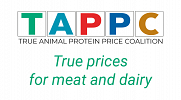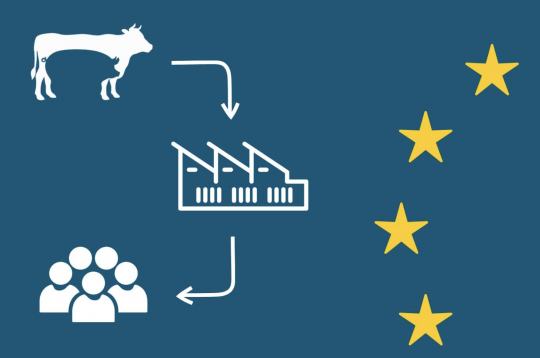Climate action in a downstream agricultural emissions trading system
In October 2024, Denmark's green think tank CONCITO published a report on climate action in a downstream agricultural emissions trading system. The full report can be found here.
Report summary
Agriculture is the largest sector in the EU that is not covered by an Emissions Trading System (ETS) and thereby not subject to the polluter pays principle. At the same time the sector has hardly experienced reductions in greenhouse gas (GHG) emissions in the last 15 years and will, based on existing measures, only deliver very limited reductions in the future. Currently, various policy interventions, such as an agricultural emissions trading system (AgETS), financing of on-farm credits and/or mandatory climate standards, for regulating agricultural GHG emissions are being considered and discussed among stakeholders across the European Union. Recently, the Strategic Dialogue on the Future of EU Agriculture delivered its final report calling for further work with stakeholders and experts to assess the feasibility and relevance of an AgETS (European Commission, 2024a).
The introduction of a downstream emissions trading system for livestock emissions (downstream AgETS) is one of the discussed options to incentivize climate change mitigation in the agri-food value chain. This has been analyzed in a report commissioned by the European Commission called “Pricing Agricultural Emissions and Rewarding Climate Action in the Agri-food Value Chain” (Bognar et al., 2023), hereafter “Trinomics report”. The Trinomics report also considered four other AgETS options, but these are not analyzed in this report, as the downstream model has been the center of discussion in the aftermath of the publication of the Trinomics report.
A downstream AgETS focuses specifically on livestock emissions and could place the obligation on food processors or further down the agri-food value chain such as retailers. While there are many other purchasers of agricultural products, this report covers meat and dairy processors given the complexity to place the obligation further downstream and limited options to pass on incentives for climate action to farmers.
The design of an emissions trading system involves several key policy choices with the potential to significantly influence the system's effectiveness and efficiency. This report assesses effectiveness aspects of a downstream AgETS such as 1) the possible climate effect from the emissions cap and 2) climate action along the agri-food value chain incentivized through the allowance price of a downstream AgETS.
Recommendations
CONCITO recommends emissions trading as a mitigation tool in agriculture and will engage in further discussions about all potential points of obligation. If a downstream AgETS is established, CONCITO recommends considering five key design principles to effectively reduce livestock GHG emissions:
1. Clear incentives for mitigation on farm
An AgETS should be designed to ensure that climate action on farm level occurs, since it has a large and cost-effective mitigation potential. Farmers should be incentivized to implement mitigation measures, which must lead to real, additional and verifiable reduction in emissions. The audit approach for food processors should be further explored.
2. Ensuring good monitoring, reporting, and verification
Monitoring, reporting and verification (MRV) of agricultural emissions is essential for a well-functioning AgETS. Measures should be taken to harmonize and incentivize on-farm MRV of GHG emissions. Special consideration must be given to the design (e.g. audit versus baseline approach), coherence with national GHG inventories, and the use of existing data (e.g. from the common agricultural policy, food safety legislation, animal welfare legislation, and corporate reporting rules) to reduce administrative burdens and ease implementation.
3. Ensuring market integrity
An AgETS can only be an effective climate instrument if it ensures a functioning allowance market and a strong, fair, and manageable price signal through its emissions cap. Therefore, issues of volatility, liquidity, and the risk of market abuse must be addressed. Voluntary credits for emission reductions and carbon removals should be disconnected from the system to ensure environmental integrity, simplicity, and learnings of the system.
4. Simplicity and administrative feasibility
The administrative feasibility for the actors along the agri-food value chain should be considered e.g. through threshold values, providing training and support to farmers and other stakeholders to participate in the ETS, increasing the details of the MRV over time, and/or use of existing data.
5. Redistribution of AgETS revenues
Repurposing revenues from an AgETS towards targeted climate action in the agricultural sector can amplify its overall climate impact. A portion of these revenues could be allocated to support mitigation measures beyond the scope of the downstream AgETS, including carbon removals by farmers and foresters. Additionally, revenues could be used to mitigate the potential distributional effects on consumers as well as to finance innovation and promote climate-friendly consumption.


